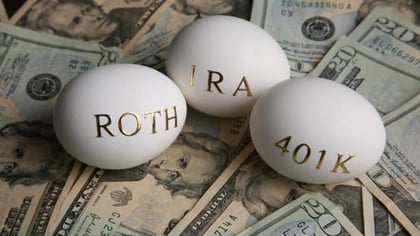There are four key advantages of Roth conversions for investors in retirement, according to Joel Dickson, global head of advice methodology at Vanguard.
“There are a lot of things that can change in retirement,” he said during the Financial Planning Association’s online conference Wednesday.
“First of all, the federal tax brackets are wildly different for married and single individuals and marital status can change in retirement,” he said. “It can change for a number of reasons,” including divorce and the death of a spouse, he pointed out, before laying out the main advantages of Roth IRAs:
- Federal tax brackets are more favorable for married couples filing jointly than for single individuals, and Roth IRAs let you lock in current tax rates.
- Conversions reduce future required minimum distributions on traditional IRAs.
- Withdrawals do not factor into the 3.8% Medicare surcharge or Social Security benefit taxation.
- There are no lifetime RMDs.
Tax-Efficient Investing
“It’s important just to recognize that, a lot of times, clients don’t necessarily understand or know a lot of nuances from a financial planning standpoint, and we really believe that financial planning elements of the advisory relationship can add as much or even more kind of value in and of itself than even the investment portfolio,” Dickson said at the start of the presentation.
And one way to do that is with tax-efficient investing, he noted. There are generally two ways to add value from a tax efficiency standpoint: “One is deferring taxes as long as possible” and the second one is “there may be opportunities to pay taxes now to avoid higher tax liabilities in the future,” he said, pointing out the latter would be the focus of his presentation.
During the session, he discussed the concept of a break-even tax rate (BETR) calculation that he said provides a more accurate view of what future tax rate expectations would guide an advisor’s and an investor’s choices and help inform a Roth conversion discussion.
Dickson also explained the potential benefits, such as improving retirement income and estate planning outcomes, of advisors and investors expanding their use of Roth contributions and conversion strategies.
“I like to think about traditional and Roth [IRA] accounts as being the opposite sides of the same coin. You’re getting tax-advantaged growth and you’re getting some form of tax-advantaged investment either on the way in or on the way out,” he said. “On the Roth, you get the tax benefit on the way out, which is that the withdrawals are tax-free.”
Another key difference with the Roth IRA is that there are no lifetime RMDs, while with the traditional IRA you must start taking RMDs when you reach age 72, he pointed out.









 October 05, 2020 at 10:02 PM
October 05, 2020 at 10:02 PM











